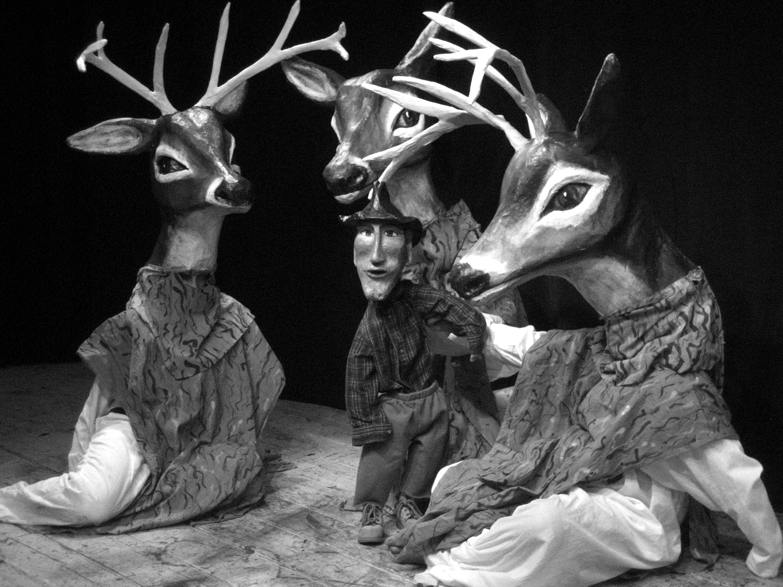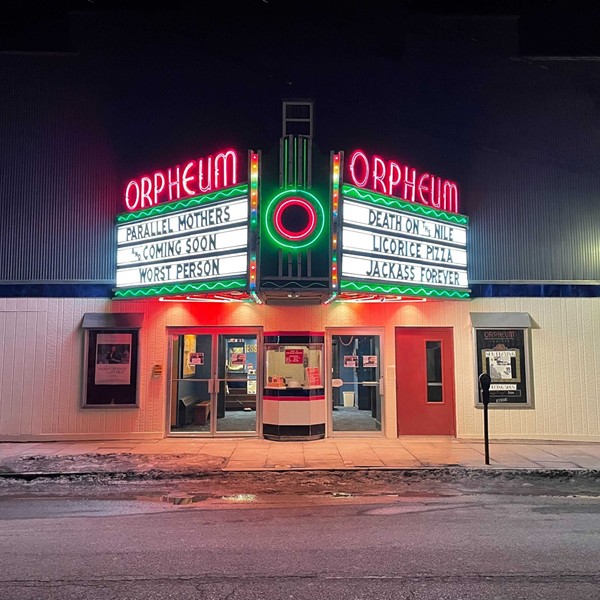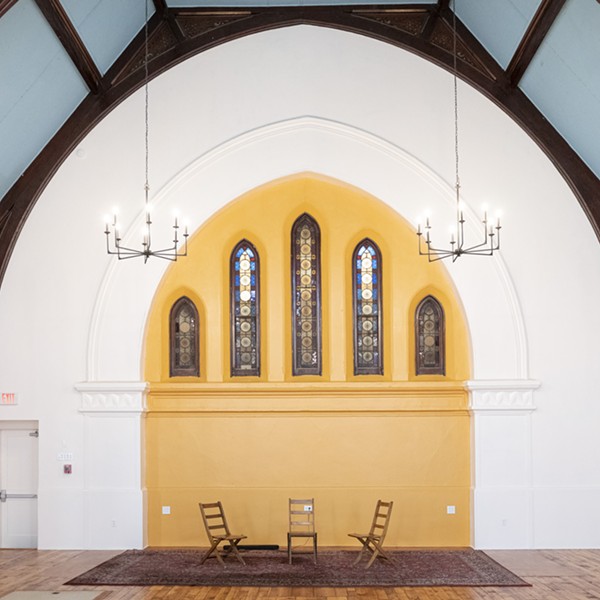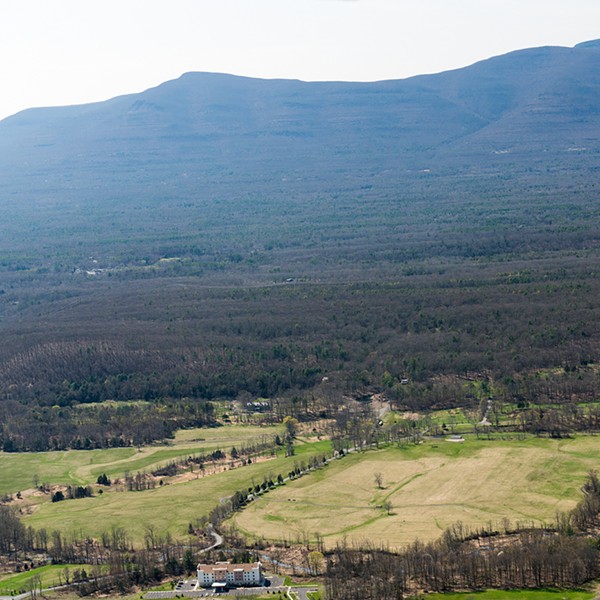
Patrick Wadden and Marlena Marallo founded the Arm-of-the-Sea theater company in 1982. The troupe’s first show, “Mr. Avarice and the Great Pumpkin of the World,” was performed at Clearwater’s Pumpkin Festival that same year. Based in Saugerties, the not-for-profit group combines puppetry, masks, paintings, dance, and live music to illuminate the New York City watershed (“City That Drinks the Mountain Sky”), migrant farm labor (“La Cosecha”/“The Harvest”), and to enact colorful folktales. Arm-of-the-Sea appears in community centers, parks, and museums around the country, as well as in Latin America. In honor of its 25th anniversary, the company will perform 25 free shows in venues ranging from Lakeville, Connecticut to Detroit, Michigan.
On August 24 and 25 from 7 to 11pm (raindate August 26), Arm-of-the-Sea will present its seventh annual “Esopus Creek Puppet Suite” at Tina Chorvas Waterfront Park in Saugerties. The six-piece Big Sky Ensemble will accompany Arm-of-the-Sea, performing original music by Dean Jones. This festival will also include the Energy Dance Company, the Percussion Orchestra of Kingston, and puppeteer Grian MacGregor presenting an updated staging of the “The Crone Chronicles.” For more information, call (845) 246-7873 or visit www.armofthesea.org.
—Sparrow
Sparrow: What are you creating at the moment?
Patrick Wadden: The show we’re working on, the “Esopus Creek Puppet Suite,” is inspired by the work of an evolutionary microbiologist named Lynn Margulis. That’s someone we’ve been reading this spring, and we’re exploring how life on Earth got to be this immense, dazzling, astounding complexity. Margulis has been working in the realm of microbes—the so-called “simple” beings who were the primary residents of the Earth for about two billion years! Microbes figured out most of the metabolic pathways, most of the structures, and everything else has been built on that. So instead of Alice Through the Looking Glass, it’s Alice Through the Microscope.
That exploration takes place as a play within a play, or, I should say, a circus within a play. The circus is carried on by these characters called the Bio-Illuminarians. They’re the guides through the doors of perception. And who they’re guiding is Rip Van Twinkle, this scientist and artist.
Are there books by Lynn Margulis?
Oh, there are lots of books. There’s Microcosmos, Acquiring Genomes, Garden of Microbial Delights, Five Kingdoms. She’s been very prolific. Symbiotic Planet is another one.
So you’ve been reading a lot of these?
Yeah, we have them all here. And then we add our own spin to it. It’s just a starting point. We’re not trying to render it.
Over the years, you’ve been drawn into the study of biology, I’ve noticed.
A lot of our shows explore the interrelations between the human and the nonhuman. As puppet theater, we’re not stuck in just the dimensions of an actor. We can have actors that represent the soil; we can represent anything we want.
It’s not like a movie, where you need to find an actual firehouse if you want to show a firehouse.
Right. This is a symbolic visual language. It’s all made by hand, pretty basic materials: fabric, bamboo, papier-mâchè.
And who physically paints and builds it?
Well, Marlena Marallo is really the driving visual artist behind it. But we both make things.
And puppets can certainly be very large and very small.
Yes, that’s one of the great freedoms of the medium, to play with scale. In fact, the main character, Rip Van Twinkle, has five different manifestations, ranging from 15 inches high to 10 feet tall.
As he goes through different dimensions.
Right.
So the same way Rip Van Winkle disappears for 20 years, Twinkle disappears into the world of tininess.
Yes. And also deep time. Not just into the microworld, but also into the realm of the past, when that’s all there was.
The microbes are ancient beings. If they reproduce by dividing, essentially they’re all eternal.
That’s a fascinating insight, because biological death isn’t a reality until you get more complicated beings. Individual bacteria can be killed, of course, but by dividing, dividing, dividing—it’s not death as we know it. And they can exchange genetic material with almost any other microbe. The line of what defines a species is not clear.
I like the way that you pursue your own curiosity. You have a respect for your own curiosity.
There aren’t a lot of perks to being an artist in this culture, but that’s one of them. I mean, that’s kind of the basis of it; doing your own search.
For me, there’s an element of problem solving in your theater. You lead the audience into a magical world to contemplate some problem: the watershed, militarism, microbes.
Well, yes, it’s a shared dream. It doesn’t last forever, but live theater is shared enchantment.
And I notice a lot of your pieces are 50 minutes long, like a therapy session.
[Laughs.] Is that [how long] a therapy session is? That’s funny. I never knew that.
















